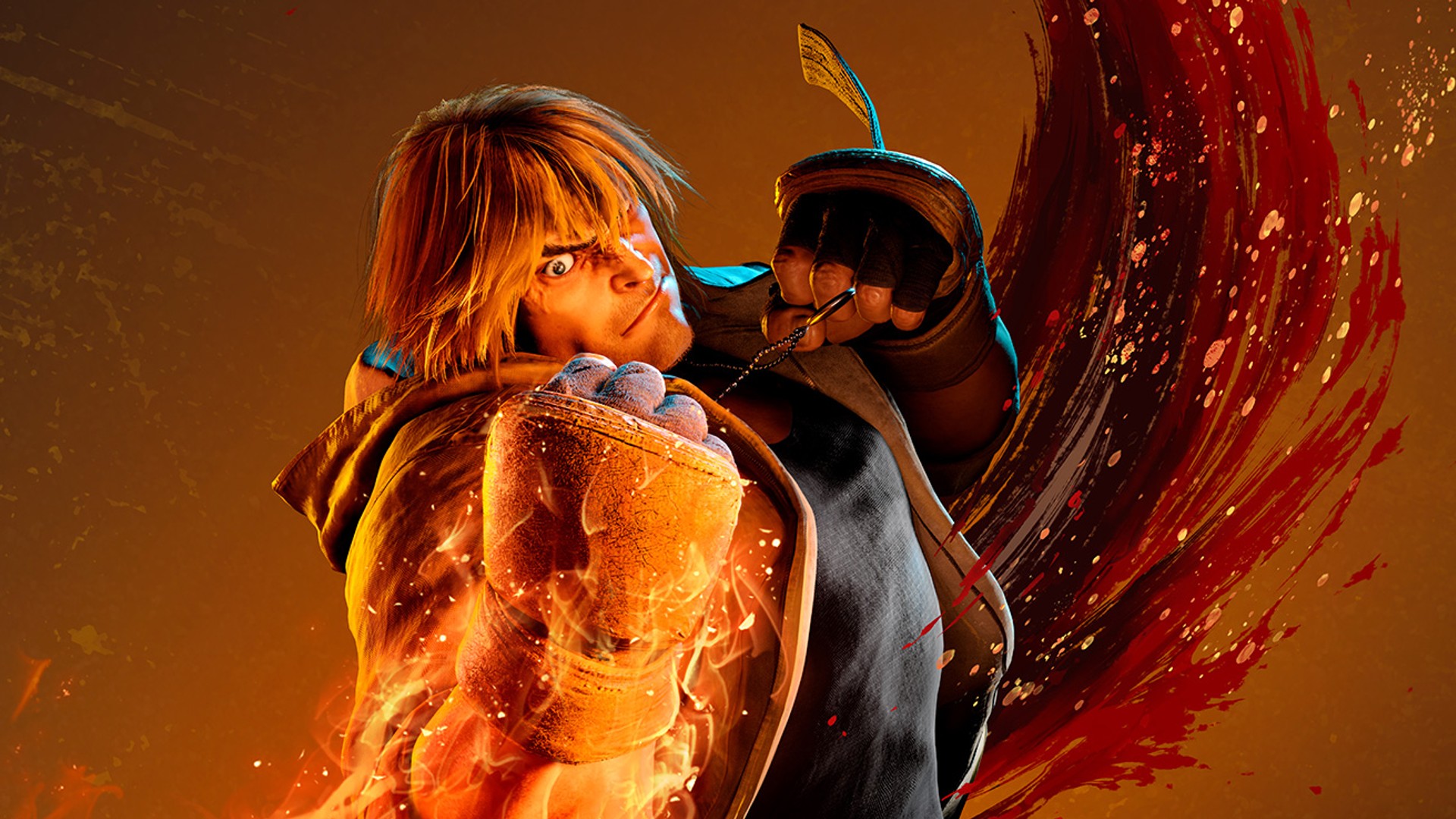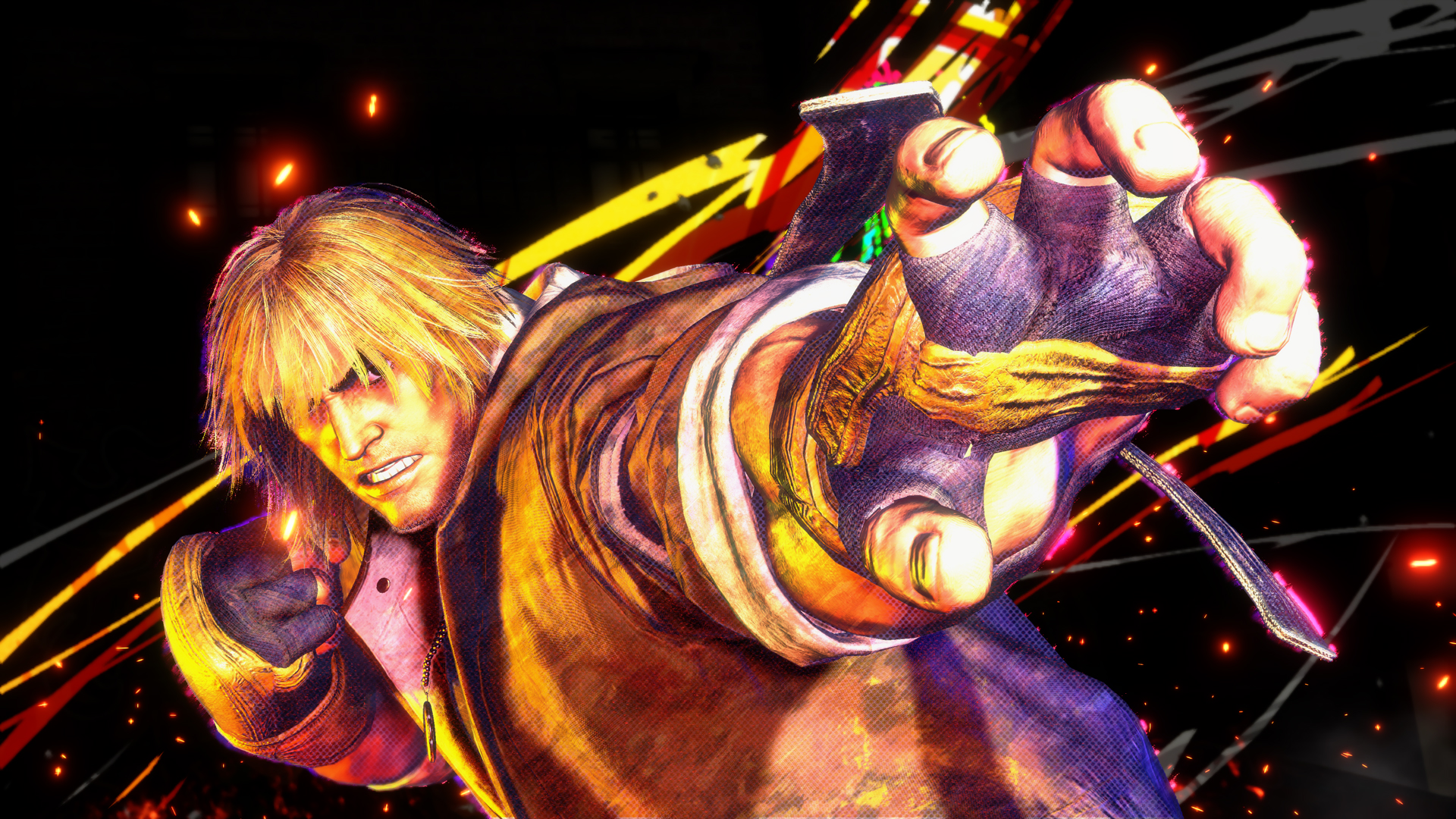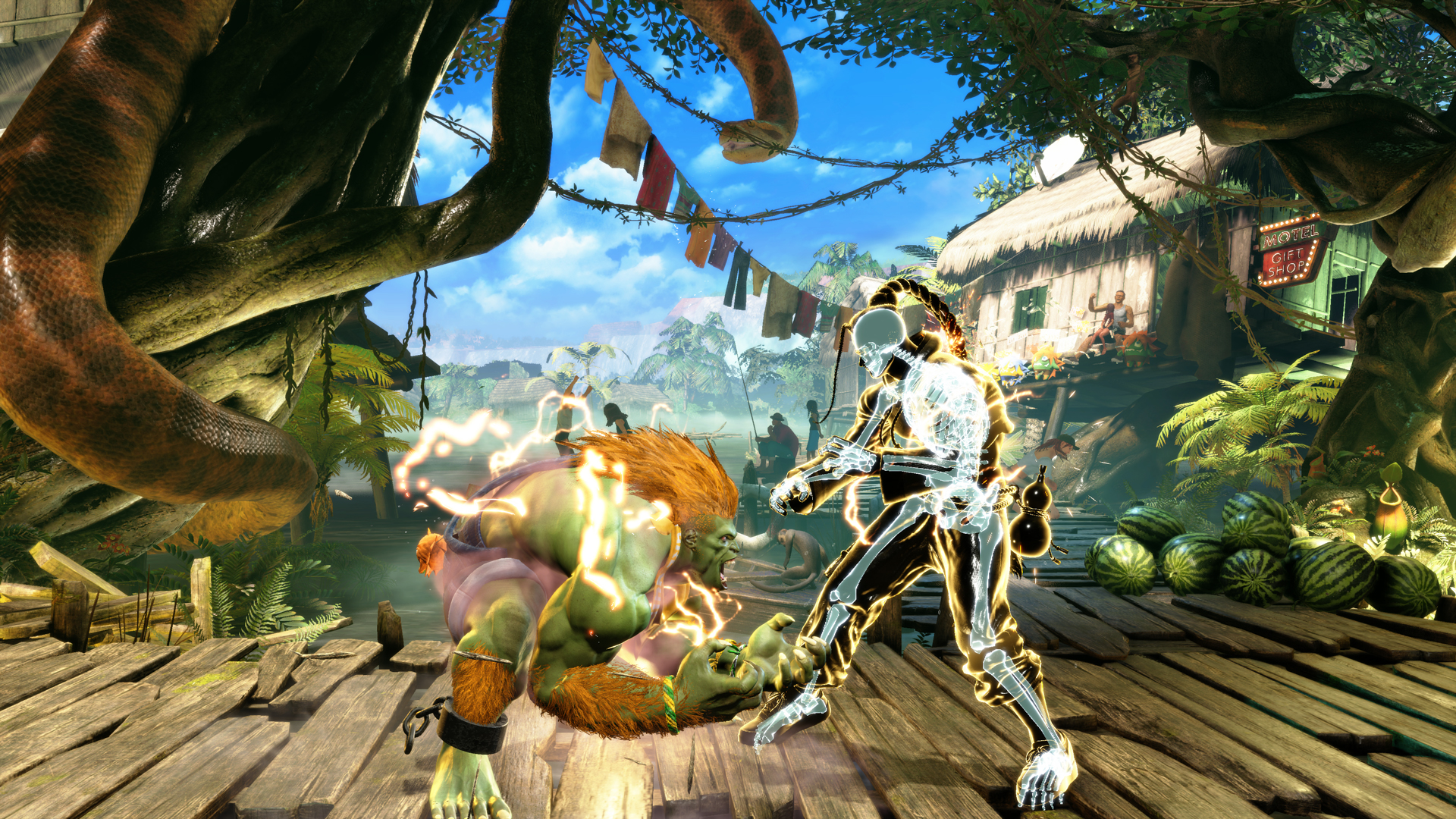Street Fighter 6 beta proves Capcom is onto something special
The recent Street Fighter 6 closed beta teased a catalog of new features for fresh faces and seasoned combatants alike

Last weekend, Capcom ran a closed Street Fighter 6 beta – and it already looks and feels brilliant. These events are often a means of testing netcode and servers pre-release, but, even at this early stage, the presentation of this game is incredible, the netcode among the best you’ll find, and the sheer wealth of training options that satisfy both hardcore and casual players – not to mention the superb 'Battle Hub' lobby and a character creator that lets people unleash some true monstrosities upon the world – made this one of the most fully featured beta tests we've seen in some time. So much so, it's not unreasonable to compare the amount of content the Street Fighter 6 beta brought with it, with the amount of content Street Fighter 5 contained at launch. Which, to be fair, probably says more about the latter than the former.
Capcom, it seems, is keen to avoid the same pitfalls this time around, and with Street Fighter 6 set to be split into three major portions – the open world single player World Tour, the more traditional Fighting Ground, and the online focused Battle Hub – it feels like there's plenty of scope for the developer to do so. The Battle Hub was a point of focus in this most recent beta, and while the feature may have looked like an attempt at some kind of Street Fighter metaverse to some – players create avatars who play at, and can be challenged at, virtual arcade cabinets – it's actually much closer to the fighting game genre's arcade roots.
For fans of the competitive scene, or those who have favorite content creators, being able to go into a lobby and see these players standing in front of virtual cabinets – and, if they’re feeling brave, challenging them to a game – adds a distinct layer of community, more often associated with the offline scene; something that's often lacking in the somewhat sterile online fighting game space. It’s a bit of a shame that this might change come full release, as top players tend to stick to playing other top players in private lobbies, but it was a cool glimpse at what could be.
And of course, if you didn’t fancy getting bopped by Problem X, you could always just spend some in-game currency on new cosmetics for your avatar – or play a classic Capcom arcade game on one of the specially designated cabs. Changed at midnight every day, the beta saw Super Street Fighter 2 Turbo, Final Fight, and the brilliant Magic Sword available to play. The fact that there’s a constantly rotating series of Capcom arcade belters just sat in the corner of every online lobby is an indicator of how deep the quality content Street Fighter 6 is looking to offer goes.
Let's go!


Street Fighter 6 hands-on: A multitude of new moves, and some polish for the past
Once engaged in a game, the netcode was basically flawless. Playing people from the same region worked perfectly, and there was even a series of high-profile matches played by USA versus Japanese players, and some Europe versus East Coast USA which went off remarkably well. When up against someone from Australia, on the other hand, the match wasn’t exactly ideal, but it wasn't what you'd call unplayable, far from it, which is pretty remarkable for a beta test. Another notable plus is how quick the game allows you to rematch – it was a matter of seconds from the end of one game to ROUND ONE, FIGHT in the next. How this plays out when PS4 owners join the battle upon release is a different matter entirely, but the SSD speeds of the current gen consoles were put to incredibly good use in maximizing the time spent playing the actual match, instead of browsing menus or load screens. Other than a few wobbles on the first day that required an hour or so of maintenance, it was all very impressive.
With any potential internet issues put to bed, players could focus on the actual game, and start messing around with the new characters and the new battle mechanics from the off. Whenever a new fighting game arrives, there’s this brilliant period of discovery where players spend time figuring stuff out – a period that's been made exponentially better by the advent of social media, and the ability to easily share information with other players. This beta test was the first real time a large crowd of players of all skill levels could play Street Fighter 6 at their own pace for a decent chunk of time, and Twitter was alive with people posting clips of all the cool stuff they found. The game's new core mechanic, the Drive System, was the biggest talking point.

"The input window for a Perfect Parry is just two frames – for some perspective, in the famous Evo Moment 37 'Daigo Parry' video, those parries have a 10-frame window, so this is five times tighter."
In Street Fighter 6, every player has a 'Drive Gauge', made up of six green pips, that can be used in a number of ways. First off, your character’s EX moves (now called Overdrive) are tied to this. Perform a special move with two punch or kick buttons, and you get a version that has different properties – more hits, for example, better combo potential, or even changing the trajectory of the attack. A 'Drive Reversal' can be used while blocking, and although it doesn’t do a great amount of damage, it helps players distance themselves from aggressive players at the cost of two Drive Gauge pips. 'Drive Rush' is the most interesting, on the other hand, as it allows you to dash forward after any cancellable normal punch or kick to achieve flashy combos that are otherwise impossible – or create a situation where a defending opponent is forced to absorb a considerable amount of pressure. Even after three solid days of top players toying with this, it still feels like we've barely scratched the surface regarding the potential of this particular mechanic.
Weekly digests, tales from the communities you love, and more
Elsewhere, the 'Drive Parry' absorbs any incoming attack by simply holding down both medium buttons, draining the Drive Gauge while in use, but gaining more for every attack parried. It’s essentially another way of blocking, but used to build Drive Gauge. If you hit the buttons at the precise moment an attack lands, you get a Perfect Parry, the action pauses and the camera zooms in as you get the opportunity to immediately counter with your own combo. This will inevitably require some practice, because the input window for a Perfect Parry is just two frames – for some perspective, in the famous Evo Moment 37 'Daigo Parry' video, those parries have a 10-frame window, so this is five times tighter. Nailing one is extremely satisfying, though, made even better by the visual and audio feedback.
The most controversial part of the Drive System, however, is the 'Drive Impact'. Similar to the Focus Attack in Street Fighter 4, hitting both heavy attack buttons performs a charged up strike that will tank through two hits (although a third will break through and stop it), and deliver an almighty blow to your opponent, stunning them and allowing you to basically do whatever you want to them in return. It can be blocked, but be warned, if you block it too near the edge of the screen, you will splat against the wall and end up in the same situation as if the hit connected, significantly increasing the already high risk of being cornered. It only costs ONE pip of Drive Gauge, too. It's an extremely powerful tool, and one that is clearly intended to be the backbone of everything in Street Fighter 6.
K.O.

The above has been a controversial topic, simply because it is so good. You can be playing someone who is significantly less skilled, but if you over-extend or get too cocky, they’re one move away from putting you in a very, very bad spot. It’s so strong and so sudden, that if you’re not ready for it, you can end up getting hit by it repeatedly which has been the source of much frustration over the beta period. Luckily, there’s plenty of ways to deal with it. First of all, it feels slow enough on start up to react to, so you can attempt one of these techniques.
As mentioned above, hitting the opponent three times before the attack lands will break through it, but a player charging their Drive Impact can be thrown, it can be jumped, you can block it and the situation is essentially reset to a neutral state. If you’re feeling yourself, you can parry it and negate it completely or, as was the most common answer, you can react to it with a Drive Impact of your own. Whoever’s Drive Impact lands second wins the exchange, allowing you to not only deliver a combo of your own, but also means the other player wastes some of their precious Drive Gauge. In matches between less skilled players, you see a lot of wild Drive Impacts being thrown out, because it is a fairly low risk/high reward technique that is easy to do and has a pretty good success rate, while in some of the high level matches over the weekend, you see it used more strategically, largely because they’re wary that their equally as talented opponent will be able to counter it.
The place where the issues really showed up was in matches between average skilled players – players who know their Street Fighter, but are far from the elite. A few matches turned into staring competitions towards the end of rounds, with players ending up gun-shy because of their fear of the Drive Impact. This is no doubt down to inexperience with this new system, and will probably change after the launch of the game when people have more time to hit training mode and figure out how to deal with it. It’s a great equalizer for new players and a momentum shifter for veterans, and is ultimately what the game is going to live or die on. Based on the beta, however, the amount of cool stuff found when figuring out how to best use it and avoid it is exactly the sort of thing you want from a fighting game finding its feet.
The path to greatness

"Genuinely, if Capcom released this beta client as an Early Access title tomorrow, with the promise of adding the other modes in the coming months, it’d still score high."
As detailed in our previous hands-on sessions with the game, the roster so far boasts an excellent bunch of legends from Street Fighters past, and a couple of brilliantly designed newcomers that feel like they’ve been around for ages already. Ryu and Guile allow for hard-hitting defensive play. Ken, Luke and Kimberly are all about rushing down your opponent and hitting them with tricky mixups, forcing them to make all the wrong guesses; whilst Juri, Chun-Li and Jamie are more technical combatants, requiring a bit more work that the others but with significant payoff in the way of some of the game’s more impressive combos. It’s going to be very interesting to see how other popular Street Fighter archetypes fit into things, with grappler characters and Dhalsim’s wild zoning and screen-control being big question marks right now.
Throughout this article, you’ll have picked up on mention of veterans and newcomers more than once. That's because it's what really sums up the Street Fighter 6 experience so far. It’s a game that is just as aware of the needs of the hardcore, Capcom Pro Tour-watching super fan, who knows their character’s frame data just as well as the number on the back of their bank card, as it is the player who just really likes Ken and Ryu and the shenanigans they’ve been getting up to for the past 35 years. However, crucially, it doesn’t look to keep both sides separate. All of the superficial side stuff, like character creation, unlockable items and minigames, are engaging and entertaining for any skill level – and the more intimidating side of things, like training mode and actually playing other real human players who might beat the brakes off you, is far more approachable, understandable and, of course, fun. Which makes Street Fighter 6 feel like a Street Fighter game for everyone.
Genuinely, if Capcom released this beta client as an Early Access title tomorrow, with the promise of adding the other modes in the coming months, it’d still score high. The fact that there’s TEN characters still to come and two whole, wildly different game modes aimed at providing both single and multiplayer content is hard to believe, especially when the game is already this good. It looks like Street Fighter 6 is going to set the bar for the coming generation of fighting games and, if you’re a developer out there currently cooking one up, I reckon you must be looking at this as the new benchmark for content and quality.
Kick, punch, chop your way through the best fighting games in the ring today.

Andi is a freelance games journalist, but also has a "normal job". Over the last 10 years, Andi has specialised in writing about Street Fighter and Dark Souls, but also covers games more broadly, along with creating podcasts and videos for YouTube and Twitch. Andi also prides himself in cooking a mean barbecue.


